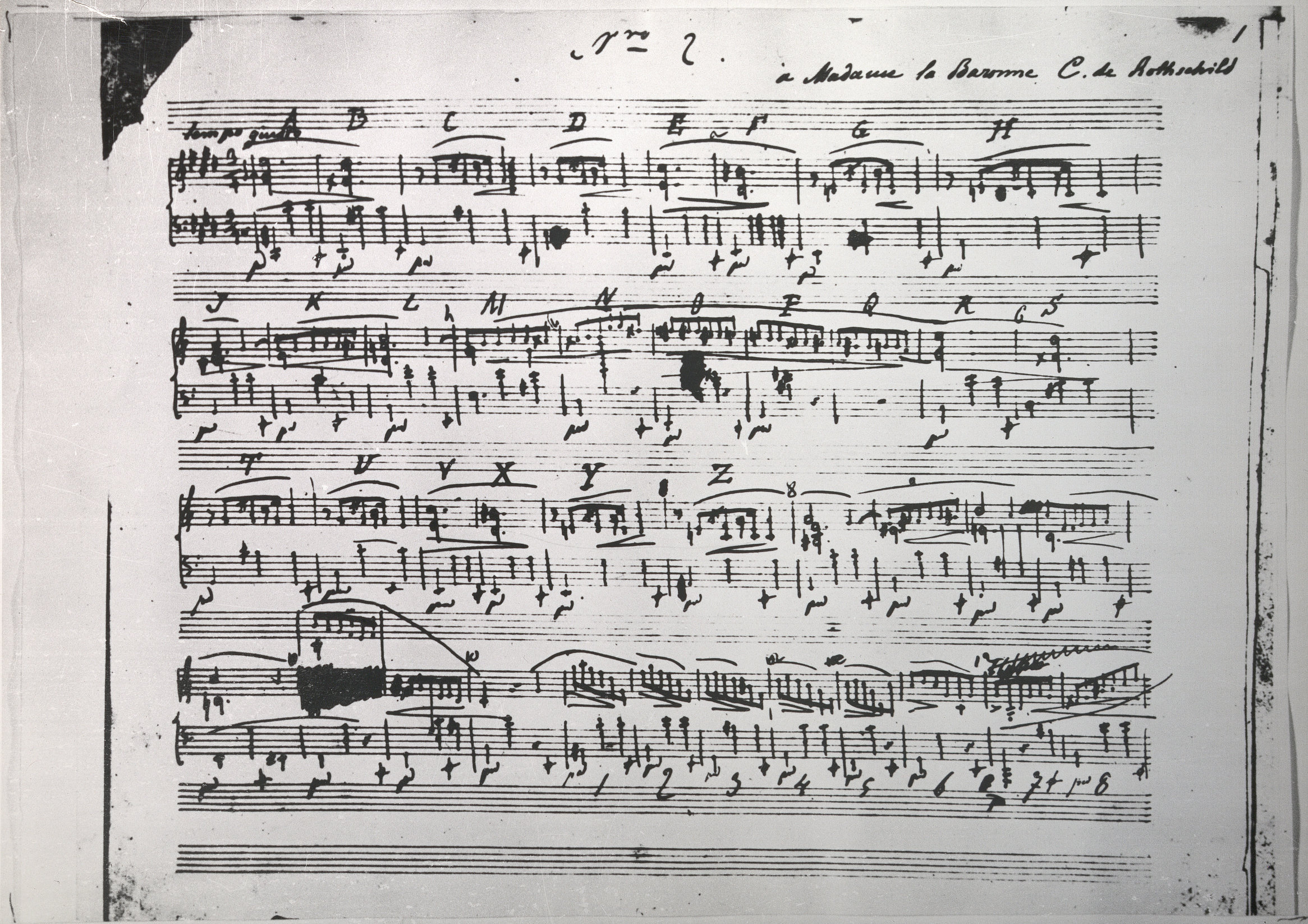Op. 2, Variations in B♭ major
Op. 10, 12 Etudes
Op. 11, Concerto in E minor
Op. 21, Concerto in F minor
Op. 22, Polonaise in E♭ major
Op. 24, 4 Mazurkas
Op. 25, 12 Etudes
Op. 26, 2 Polonaises
Op. 27, 2 Nocturnes
Op. 28, 24 Preludes
Op. 30, 4 Mazurkas
Op. 35, Sonata in B♭ minor
Op. 50, 3 Mazurkas
Op. 63, 3 Mazurkas
Op. 64, 3 Waltzes
(Op. 4), Sonata in C minor




Op. 64 No 2, Waltz in C♯ minor
In A the  asterisks are put either after the 3rd crotchet in the bar (or a corresponding it rest) or before, depending on the fact whether the entire bar is based on the same chord or not. In FE the differentiation was lost – all signs are put either under or slightly after the 3rd crotchet (rest), whereas the differences are not related to the notation of A (or – consequently – to the harmony). The remaining editions reproduce the version of FE more or less accurately, although in GE the signs are generally placed after the 3rd crotchet, while in EE – rather below. In our transcriptions of particular sources, we assume that the asterisks placed in an inaccurate manner – most often slightly after the 3rd crotchet – are considered by us to be compatible with the majority of such signs in a given phrase of a discussed source.
asterisks are put either after the 3rd crotchet in the bar (or a corresponding it rest) or before, depending on the fact whether the entire bar is based on the same chord or not. In FE the differentiation was lost – all signs are put either under or slightly after the 3rd crotchet (rest), whereas the differences are not related to the notation of A (or – consequently – to the harmony). The remaining editions reproduce the version of FE more or less accurately, although in GE the signs are generally placed after the 3rd crotchet, while in EE – rather below. In our transcriptions of particular sources, we assume that the asterisks placed in an inaccurate manner – most often slightly after the 3rd crotchet – are considered by us to be compatible with the majority of such signs in a given phrase of a discussed source.
A few particular situations – bars 4, 15, 20, 22, 24, 29, 30 and 31 – are discussed separately.
Compare the passage in the sources »
category imprint: Graphic ambiguousness; Differences between sources
issues: Inaccuracies in GE, Inaccuracies in FE, EE inaccuracies
notation: Pedalling

